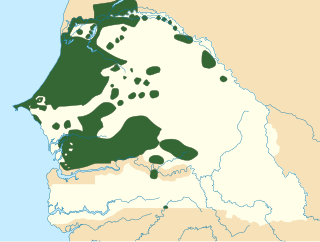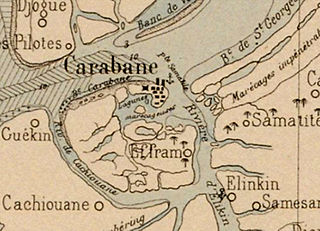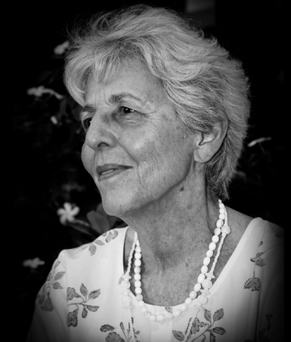Related Research Articles

Wolof is a language of Senegal, Mauritania, and the Gambia, and the native language of the Wolof people. Like the neighbouring languages Serer and Fula, it belongs to the Senegambian branch of the Niger–Congo language family. Unlike most other languages of the Niger-Congo family, Wolof is not a tonal language.

The West Atlantic languages of West Africa are a major subgroup of the Niger–Congo languages.

The Mandinka language, or Mandingo, is a Mande language spoken by the Mandinka people of Guinea, northern Guinea-Bissau, the Casamance region of Senegal, and in The Gambia where it is one of the principal languages.

The Jola or Diola are an ethnic group found in Senegal, the Gambia, and Guinea-Bissau. Most Jola live in small villages scattered throughout Senegal, especially in the Lower Casamance region. The main dialect of the Jola language, Fogni, is one of the six national languages of Senegal.

Senegal is a multilingual country: Ethnologue lists 36 languages, Wolof being the most widely spoken language.
Serer, often broken into differing regional dialects such as Serer-Sine and Serer saloum, is a language of the Senegambian branch of the Niger–Congo family spoken by 1.2 million people in Senegal and 30,000 in the Gambia as of 2009. It is the principal language of the Serer people, and was the language of the early modern kingdoms of Sine, Saloum, and Baol.
Jola (Joola) or Diola is a dialect continuum spoken in Senegal, the Gambia, and Guinea-Bissau. It belongs to the Bak branch of the Niger–Congo language family.

Mlomp is a rural community and village in the Ziguinchor Region of Senegal in the Casamance, situated approximately 40 km (25 mi) south-west of Ziguinchor.

Carabane, also known as Karabane, is an island and a village located in the extreme south-west of Senegal, in the mouth of the Casamance River. This relatively recent geological formation consists of a shoal and alluvium to which soil is added by accumulation in the branches and roots of the mangrove trees which cover most of the island. Along with the rest of Ziguinchor Region, Carabane has a tropical climate, cycling between a dry season and a wet season. The island was once considered an arid location where no useful plants were likely to grow, but it now supports several types of fruit tree, the most common of which are mangos and oranges. Although the nearby Basse Casamance National Park and Kalissaye Avifaunal Reserve have been closed for years because of the Casamance Conflict, Carabane has continued to attract ornithologists interested in its wide variety of birds. Various species of fish are plentiful around the island, but there are very few mammals.

Seleki is a village in Basse Casamance in the south of Senegal. The presence of cases à impluvium, typical of Jola architecture, greatly contribute to the reputation of the village.
Kagnout is a village in Casamance, Senegal. It is located near the left bank of the estuary of the Casamance River. It is part of the rural community of Mlomp, in the district of Loudia Ouoloff, the department of Oussouye and the region of Ziguinchor. Administratively, it is made up of three official villages: Cagnoute Bouhibane, Cagnoute Ebrouaye and Cagnoute Houyoho.

Diembéring is a village in Senegal in the rural community of the same name. It is located in Cabrousse, Oussouye, Ziguinchor, Casamance, approximately 10 km north of Cap Skirring and 60 km from Ziguinchor.

Olga Francesca Linares was a Panamanian–American academic anthropologist and archaeologist, and senior staff scientist (emerita) at the Smithsonian Tropical Research Institute (STRI) in Panama, who supported much of her research throughout her career. She is well known for her work on the cultural ecology of Panama, and more recently in the Casamance region of Southern Senegal. She is also concerned with the social organization of agrarian systems as well as the relationship between "ecology, political economy, migration and the changing dynamics of food production among rural peoples living in tropical regions".
Bandial (Banjaal), or Eegima (Eegimaa), is a Jola language of the Casamance region of Senegal. The three dialects, Affiniam, Bandial proper, and Elun are divergent, on the border between dialects and distinct languages.
The Nemi language is a Kanak language spoken by 320 people in the north of New Caledonia, in the commune of Hienghène. Dialects include Ouanga, Ouélis, and Kavatch.
Professor Souleymane Faye is a Senegalese professor of linguistics at the Cheikh Anta Diop University (UCAD), current head of the Serer Division at the Centre de linguistique appliquée de Dakar, author of Serer and Cangin languages and a journalist. Himself Serer from the Faye family, he has authored and co-authored several books and papers in Serer, Wolof, French and English. As of 2015, Professor Faye is Head of Seereer and Cangin Languages at the Seereer Resource Centre.
J. David Sapir, son of Edward Sapir, is a linguist, anthropologist and photographer. He is Emeritus professor of Anthropology at the University of Virginia. He is known for his research on Jola languages. He has been editor of the journal Visual Anthropology Review

The Musée de la Culture Diola is a museum located in Mlomp, Casamance, Ziguinchor Region, Senegal.

Ziguinchor is the capital of the Ziguinchor Region, and the chief town of the Casamance area of Senegal, lying at the mouth of the Casamance River. It has a population of over 230,000. It is the seventh largest city of Senegal, but largely separated from the north of the country by The Gambia.
Youba Sambou is a Senegalese politician from Casamance who served in the government of Senegal as Minister of the Armed Forces from 2000 to 2002. He also served as Mayor of Bignona and was elected as a member of the National Assembly in 2007.
References
- 1 2 Jola-Fonyi at Ethnologue (26th ed., 2023)

- ↑ Sapir, David J. (1965). A Grammar of Diola-Fogny: A Language Spoken in the Basse-Casamance Region of Senegal. Cambridge: Cambridge University Press.